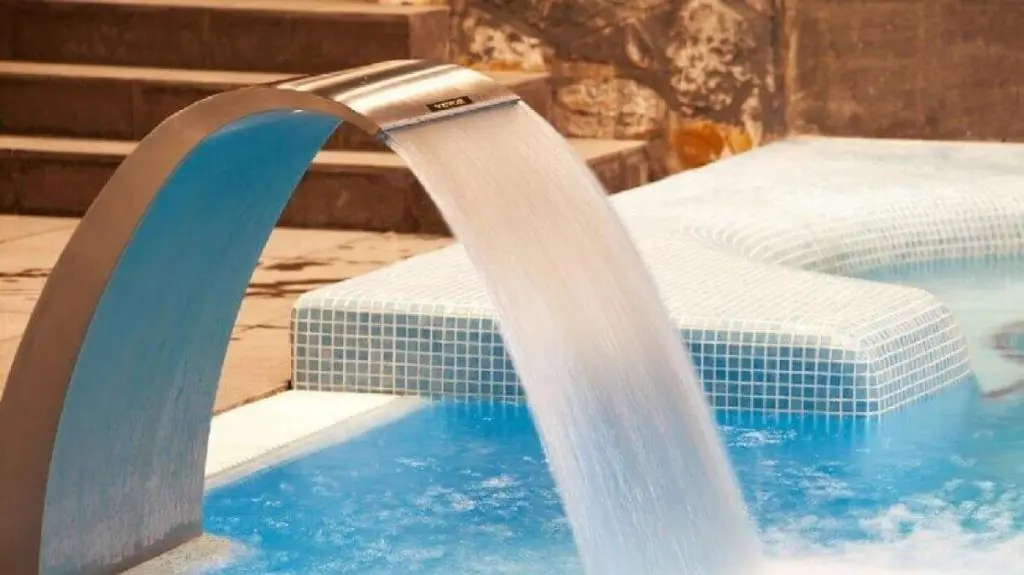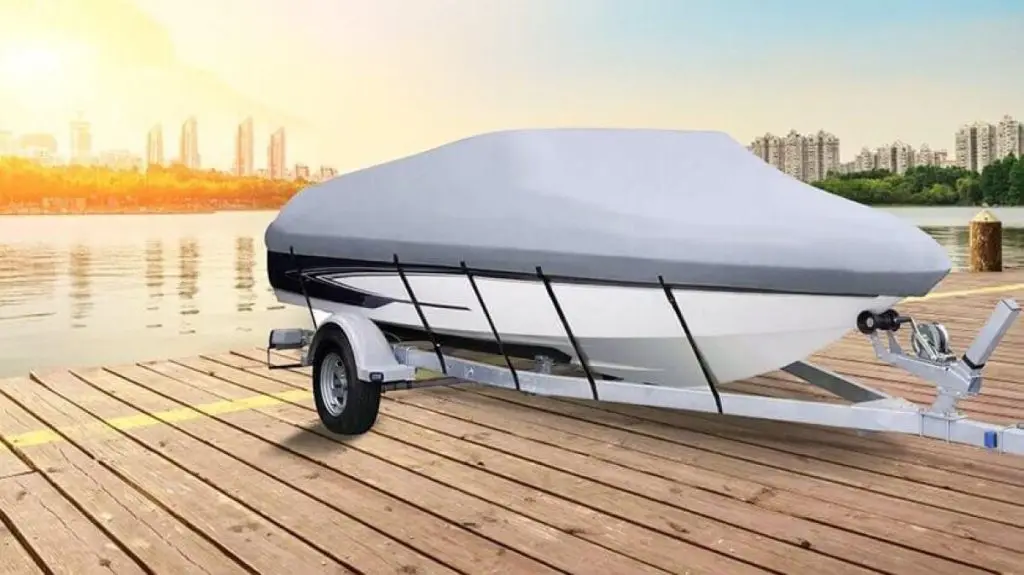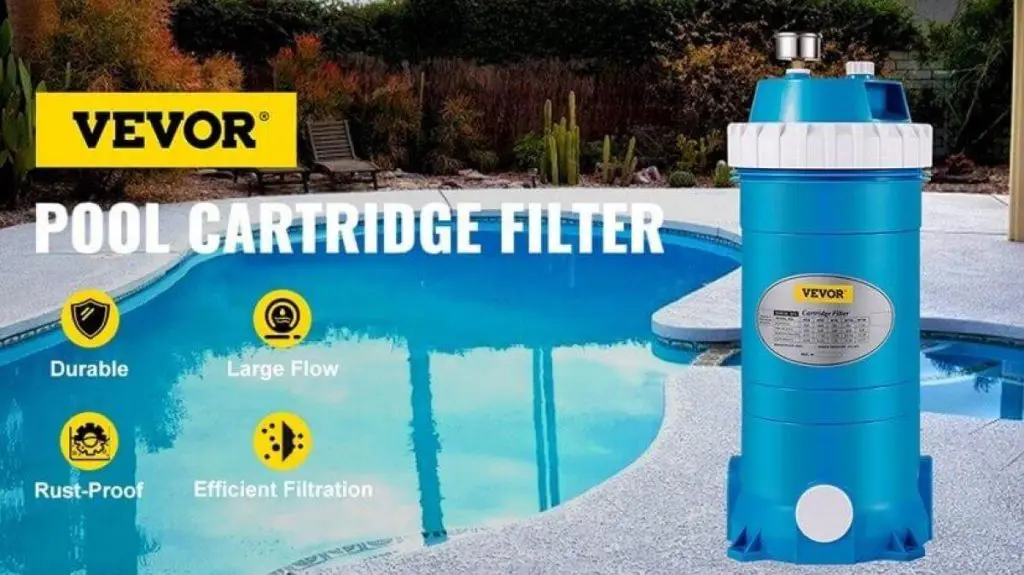Swimming pools are excellent resort centers in the home, providing sparkling water to users all around the year. However, maintaining crystal-clear swimming pool water begins with mastering its routine and weekly maintenance practices.
Meanwhile, to effectively maintain a sparkling pool, you want to understand the three Cs of pool maintenance: circulation, cleaning, and chemistry. This review explores the understanding of the pool system, how to clean a pool, the entire water circulation system, plus other basic swimming pool maintenance tips.
The guide provides answers to questions like:
- How to maintain an above-ground pool
- How do I maintain a pool?
- How to keep an above-ground pool clean
- How to maintain swimming pools of all types
- Pool maintenance for beginners; and more.
Table of contents
- Understanding Your Pool System
- Circulation: The Heart of Pool Maintenance
- Cleaning: Keeping Your Pool Sparkling
- Chemistry: Balancing Your Pool Water
- Creating a Pool Maintenance Schedule
- Troubleshooting Common Pool Problems
- Pool Maintenance Tips for Different Seasons
- Conclusion: Enjoying a Well-Maintained Pool
Understanding Your Pool System
A swimming pool can make an excellent source of entertainment and relaxation. But, like other home features, they require proper care and maintenance to work effectively. Here’s helping you to understand the entire pool system to get started on the path of effective pool maintenance.
Essential Pool Components
Swimming pools include several components. Each component works hand in hand to ensure both safety and functionality. The most essential pool components include:
- Basin
- Skimmer
- Filter
- Pump
- Return jets
- Chemicals
How Pool Circulation Works
The pump is responsible for circulating the water, while the filter eliminates debris and contaminants. The skimmer collates surface debris, while the return jets help to distribute treated water into the pool. Chemicals help purify the pool, while the plumbing connections provide the necessary flow for the entire system.
Types of Pool Filters
There are three main types of pool filters. They include:
- Sand
- Cartridge, and
- Diatomaceous earth filters
Each filter type comes with its unique traits, advantages, and disadvantages. That said, not every filter type or size would suit your pool system. You want to choose a quality filter that fits your pool’s conditions. Talking about quality pool filter options, VEVOR pool filters are renowned for their excellent durability and functionality. Consider getting a quality filter from the brand when next you’re replacing your pool’s fittings.
Circulation: The Heart of Pool Maintenance
Homeowners must maintain excellent circulation and filtration systems to keep their pool maintenance practices upbeat. That involves ensuring water flows consistently and efficiently through the pool’s system, round the pump, filter, and drain.
Why Proper Circulation Matters
Without proper circulation, maintaining a clean and healthy pool is almost impossible. That’s because stagnant or slow-moving water poses a risk of becoming a breeding ground for algae and bacteria. These could eventually cause cloudiness in the water and possibly breed potential health risks for users.
How Long Should You Run Your Pool Pump?
Every swimming pool requires at least a once-daily turnover, mostly for about eight hours. However, that’s not to say that you have to run the pool pump for eight straight hours. You could run the pump for three hours at dawn and another five hours in the evening. What matters is running the pump sufficiently for a long day to ensure thorough circulation.
Optimizing Water Flow
Optimizing your swimming area layout can help to boost circulation, making it easier for other water pool systems to function effectively. One of the most efficient lessons on how to maintain an inground pool by optimizing water flow is running your pool water for long hours. However, there are other qualitative ways of doing so, including backwashing filters, leveraging pool meters, optimizing effective heater water flow, and much more.
Maintaining Your Pool Filter
You need to rinse the cartridge filter or filters once every week. Monthly spray off the cartridge filter(s) using a filter cleaner. After spraying, allow the filter to sir for 15 minutes and rinse off using fresh water.
Once a week, you typically need to rinse the cartridge filter or filter with water. We recommend backwashing the filters every 4-6 weeks of regular use. About once a month, you’ll need to spray off the cartridge filter or filters with a filter cleaner. After you’ve done that, allow the filter or filters to sit for 15 minutes, then rinse off the filter(s) with fresh water.
Meanwhile, there are three predominant cleaning methods for taking out residual debris from your filters. They include back flushing, chemical cleaning, and pressure washing. Depending on the filter type, some or all these filter-cleaning methods can go a long way in helping you maintain a safe, hygienic, and debris-free filter.
Cleaning: Keeping Your Pool Sparkling
Here, we explore handy cleaning tips on how to maintain a pool, cleaning its vital parts to keep your pool sparkling clear. These include fulfilling the right daily/weekly routines, alongside working with the right pool cleaning tools.
Daily Pool Maintenance Tasks
Daily pool maintenance routines include maintaining an optimal water level, emptying baskets, and skimming. Ensure that the water level is optimal to allow skimmers to function properly. Too low water levels could negatively impact the skimmer’s functionality, and too high water levels can lead to a pool overflow.
Also use a pool skimmer to remove floating debris like insects, leaves, and other particles. Daily skimming helps to take out debris quickly so they don’t become problematic after several days of accumulating at the pool. Also, clear out skimmer baskets and pump strainer baskets daily to ensure adequate water flow and filtration processes.
Weekly Cleaning Routine
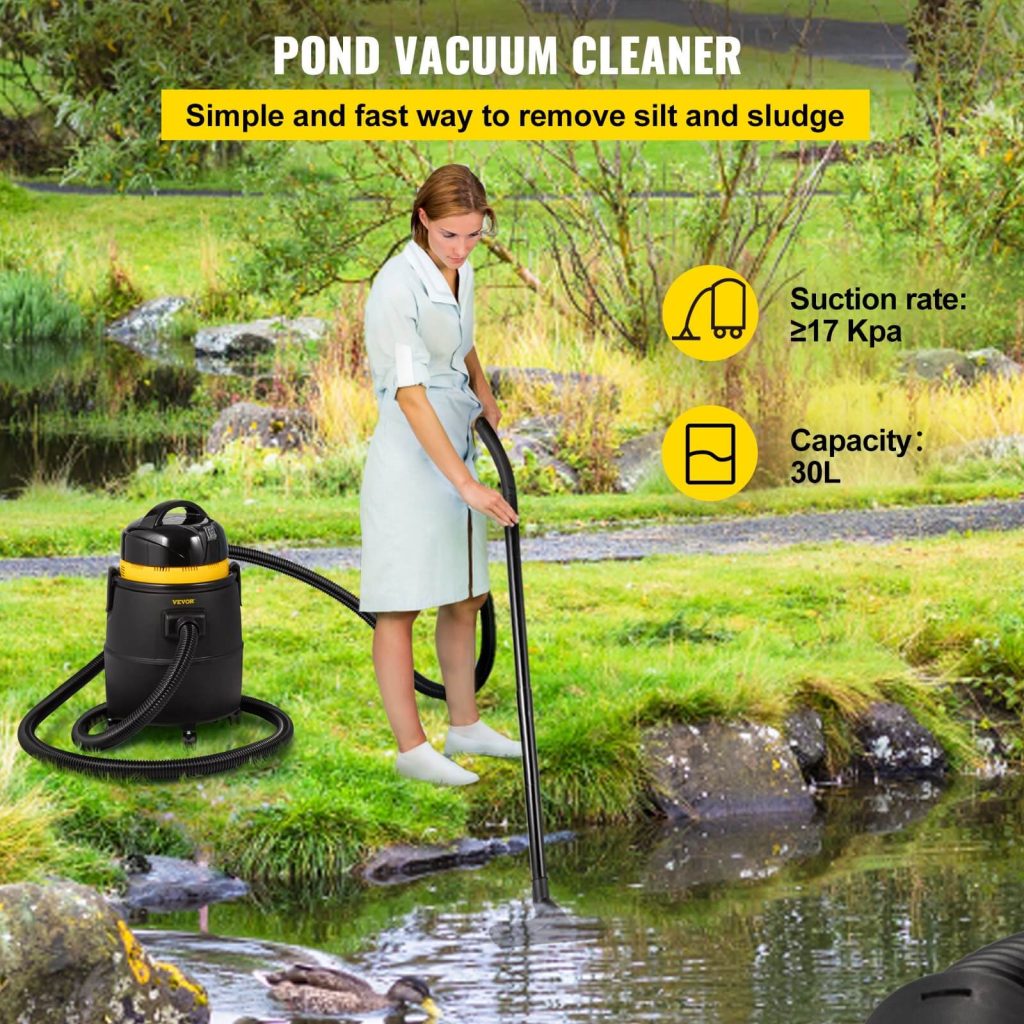
Brushing the pool’s floor and walls, vacuuming the pool using quality equipment, and cleaning the waterline are vital weekly routines worth noting for optimal pool maintenance. Clean the waterline using a long-handled leaf skimmer to remove floating debris like leaves and insects. Doing so not only boosts the pool’s aesthetics but also keeps it from clogging the entire filtration system.
Also, brush away sediments from pool walls weekly to prevent algal growth and eliminate small debris from the pool’s walls and fixtures. Consider using a pool brush to sweep all sediments toward the drain for seamless vacuuming using a quality vacuum cleaner.
After brushing, leverage quality vacuum cleaners to eliminate algae, sediment, and other debris from the entire system. That said, VEVOR has some top-notch vacuum cleaners worth checking out and purchasing for your pool cleaning needs.
Choosing the Right Pool Cleaning Tools
You possibly can’t overestimate the value of choosing the right pool cleaning tools. You want to work with the tools of the right type, quality, and size (dimensions) for your unique pool needs. When you have to introduce chemicals to disinfect the system, be sure to choose the right chemicals (based on quality and quantity) that safely suit your pool conditions.
Automated vs. Manual Cleaning Options
Automated cleaning equipment comes with a range of benefits over manual ones. But they have a couple of drawbacks too against manual alternatives. An automated cleaning system helps the user ensure that the pump is operating optimally, which improves the pool’s lifespan and keeps it clean and swim-ready all year round. They also save time and money by sparing you the challenge of removing debris manually. That way, you can reliably extend the life of your pool’s finish and filters.
However, automatic cleaners require that users clean the built-in pumps and filters frequently. Meanwhile, an automatic cleaner’s movements are limited by the length of the electrical cord. Also, automatic pool cleaners are generally pricier than other cleaner types.
Recommended For Your Project
Chemistry: Balancing Your Pool Water
Here’s the third C of effective swimming pool maintenance. It involves looking out for specific chemical water parameters that help to denote a hygienic and clean pool. We examine these parameters, how to test them, adjust wrong chemical levels, and other safety precautions worth noting.
Essential Water Parameters to Monitor
The pH and alkalinity water levels refer to the degree of acidity in your pool’s water. Having too low or too high acidity could negatively impact your skin and overall health. Also, high acidity levels could corrode the fittings of your swimming pool.
Chlorine helps to disinfect your pool from microbial infections like algae growth, bacteria populations, and other potentially harmful to unhygienic growths. However, you also want to avoid having too high chlorine levels so the water doesn’t become toxic to your skin/health and swimming garments.
Thankfully, you don’t have to experience having excessive chlorine in the pool. Cyanuric acid, a fine chemical intermediate, serves as a free chlorine buffer in swimming pool water. The chemical is often used as a stabilizer to ensure that chlorinated disinfectants maintain their germicidal efficacy.
How to Test Pool Water
Test strips and liquid test kits are two of the most popular swimming pool testing kits. Both serve the same purpose of measuring the chemical levels in a swimming pool. However, test kits are known to provide more accurate and reliable measurements compared to strips. These kits can also measure a wider range of chemical levels.
That said, test strips are generally cheaper than kits. If you want a pool testing method that’s cheaper, straightforward, swift, and doesn’t mind a moderate accuracy level, a test strip might be suitable enough for your pool.
Adjusting Chemical Levels
Check your pool’s chemical levels by testing with a test strip or kit and compare the levels against recommended amounts. Where you note there’s too high or low concentration of any chemicals, use the appropriate adjustment to get your swimming pool into a better and fitting state of health.
Shocking Your Pool
Pool shocking is done seasonally (or annually) when the pool is open to help clear up the water from algae and quickly boost an abysmal chlorine level. Shock is the name for purely concentrated chlorine in liquid or powder form that dissolves as soon as it contacts water.
After adding shock to your water, brush the pool to avoid the risk of bleaching your pool while also purging all algae on your pool’s finish. Scrub the water line with a brush so it doesn’t become permanent.
Also, brush the entire pool walls and everything else towards the skimmer’s mouth. Afterward, run the filter to remove all algae and every other debris in the pool. It’ll usually take about two or three days of running for maximum filtering effect.
Creating a Pool Maintenance Schedule
Maintaining your pool sometimes also involves creating a schedule to help maintain a consistent cleaning regimen that safely protects your family and prolongs the pool’s years of useful life. Here’s about creating an effective pool maintenance schedule that works for you and your swimming pool’s unique conditions.
Daily Tasks
Create a daily schedule that includes the routines listed in the earlier section on daily routines. These include checking the water level, inspecting safety equipment, and covering the pool at night.
Weekly Tasks
Similarly, create a weekly schedule on how to execute the tasks listed in the section above. These include cleaning the filter gauge, inspecting pool jets, and inspecting pool covers.
Monthly Tasks
Create a reminder that details what part of the month you intend to execute your pool maintenance tasks for the month. These could include deep cleaning, replacing the filters, or inspecting pool equipment like heaters, pumps, and other equipment.
Seasonal Maintenance
Seasonal maintenance practices include checking the pool’s structure, examining the pool’s plumbing, and evaluating the landscaping. You can also perform shocking operations to reinvigorate the quality of your pool.
Troubleshooting Common Pool Problems
This section discusses how to troubleshoot common pool problems and safely eliminate them.
Cloudy Water
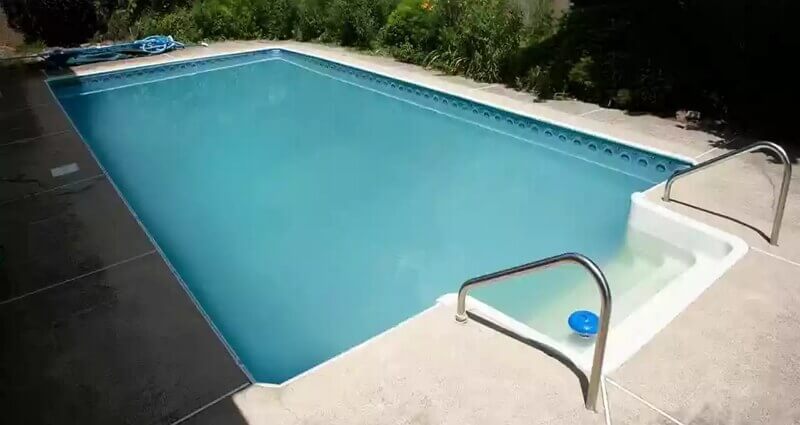
A cloudy pool could result immediately after the shock. If your swimming pool’s water appears cloudy after shock, it soon clears after a few days. However, if you didn’t recently shock your swimming pool water, and still have cloudiness in it, it may occur due to the presence of algae, scaling, or stains.
If you’re considering cleaning pools with cloudy water, some excellent solutions to try include backwashing filters, shocking, or treating. You could also add a clarifier to polish the water to maximally clean the pool.
Algae Growth
If your pool’s fittings are slippery, there’s algal growth in it. You want to take these out during routine or seasonal cleaning to keep a healthy and hygienic swimming pool always.
Stains and Scaling
Stains and scaling are quite apparent on the walls, sides, or fittings of the pool. They could result from the chemicals used in cleaning or from other causes relating to frequent usage. That said, cleaning your pool regularly (besides shocking), can go a long way in helping you avoid building stains or scales.
Equipment Issues
Various possible equipment issues could develop from any of your swimming pool equipment. Here’s a handy guide to help you troubleshoot your equipment to know when or how to resolve a faulty equipment part.
Pool Maintenance Tips for Different Seasons
Your pool will most likely enjoy its most usage during summer. However, it requires year-long maintenance to ensure it stays up and running for long. Here’s how to clean the pool during different seasons.
Spring Opening
The winter must likely have seen debris gather above the pool. Remove this debris as the spring opens. Check and reconnect the pump and filter system, scrub the internal walls, and clean the pool’s surface with a skimmer.
Shock pool to eliminate algae or bacteria and test chemical levels for compliance. Watch out to ensure petals don’t accumulate over water as spring advances.
Summer Upkeep
Test the pool’s chemical levels regularly, while executing maintenance routine cleaning before debris builds up. Skim every few days, and brush weekly, while vacuuming regularly based on the manufacturer’s instructions. Also, use high-quality chemicals when shocking to keep the water healthy always.
Fall Winterizing
Ensure that leaves don’t clog the skimmer and pump baskets during fall. You may need to skim every day. Also, clean the streamer and baskets regularly. Where necessary, check the pool cover for any tears or damage ahead of winter.
Winter Care
Balance water pH, and other chemical levels before closing the pool for winter. Remove, clean, and store all ladders and diving boards. Also, brush the interior walls and floor using a soft brush, while skimming the surface to eliminate debris and other floating objects. Install a winter cover that fits your pool to protect it from sunlight and debris till spring returns.
Conclusion: Enjoying a Well-Maintained Pool
Enjoying a well-maintained pool is straightforward once you stick to the prescribed daily, weekly, or monthly routines. Whether or not you’re learning about how to care for an above-ground pool for the first time or not. Swimming pool care for beginners and experts is as straightforward as sticking to the seasonal maintenance routines so your swimming pool stays safe whether or not it’s in use.
Remember, getting the best out of your pool has to begin with using quality tools and equipment and mastering how to keep a pool clean. But you don’t have to search too far for quality swimming pool cleaning equipment or tools. VEVOR swimming pool maintenance equipment offers a blend of durability, quality, and affordability to ensure that your swimming pool maintenance requires as little effort as possible.



